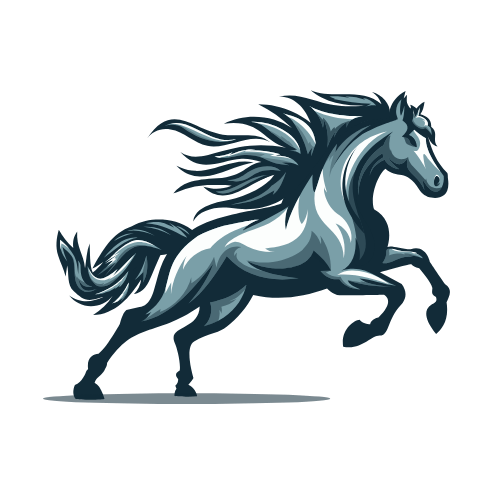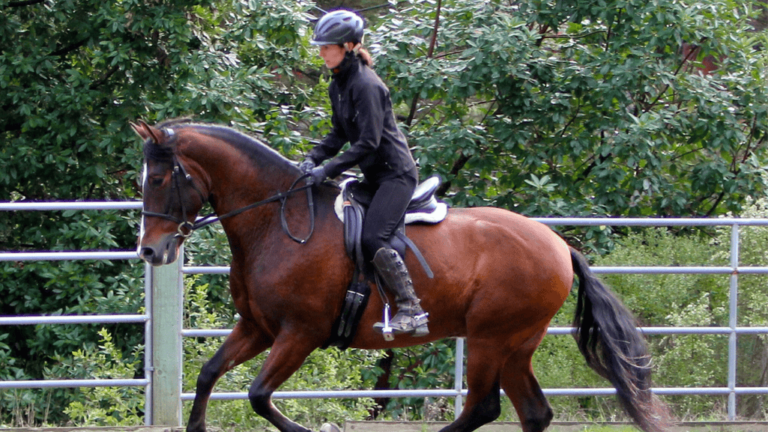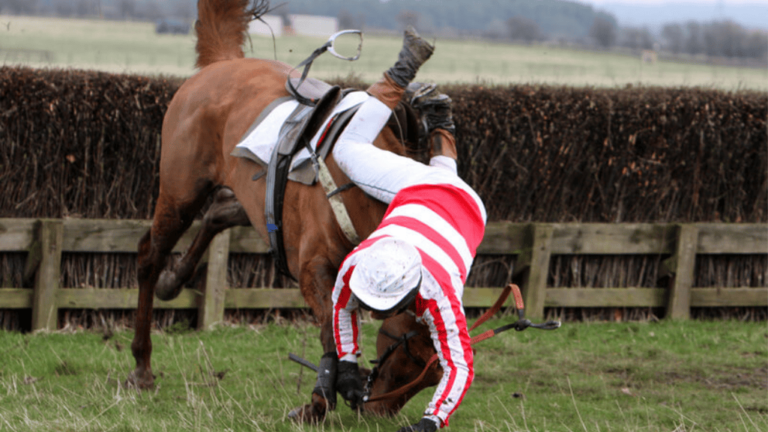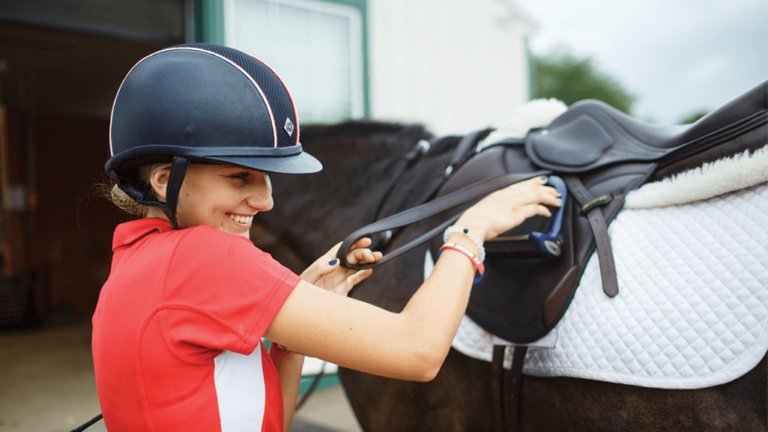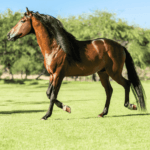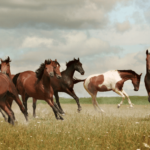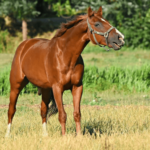Equine psychology explores the complex world of horse behavior, emotions, and social interactions. As a horse owner, knowing about equine cognition and communication is key. It helps build a strong bond with your horse. By diving into equine psychology, you learn how horses see and interact with their world. This knowledge leads to better training, care, and management.
Horses can tell the difference between happy and angry faces, affecting their actions. It’s vital to be mindful of your emotions when with horses. High stress in horses can cause health problems, bad behavior, and lower performance. So, managing stress is essential.
Research shows horses release endorphins in response to both good and bad things. Knowing this helps you create positive environments and training methods. Spotting signs of anxiety or stress during training lets you adjust for a better learning experience.
Equine psychology also guides daily care, like stable setups and exercise plans. Thinking about your horse’s mental and physical health helps create a better living space. Understanding equine ethology and intelligence strengthens your bond with your horse.
Key Takeaways
- Horses can distinguish between human facial expressions, impacting their behavior
- Managing stress levels is key for horses’ health, behavior, and performance
- Endorphins play a role in horses’ emotional states and can guide training approaches
- Recognizing signs of anxiety or stress during training allows for positive adjustments
- Equine psychology informs daily care decisions for optimal mental and physical well-being
- Understanding equine cognition strengthens the horse-human bond and partnership
Evolutionary Background of Horses
The story of horse evolution is both fascinating and long, spanning over 50 million years. From small, forest-dwelling creatures to the majestic animals we know today, horses have changed a lot. These changes were driven by evolutionary pressures and natural selection.
Ancestors of Modern Horses
The earliest known ancestor of modern horses was Eohippus, a small, dog-sized mammal from the Eocene epoch. Also known as Hyracotherium, this early horse had four toes on its front feet and three on its hind feet. These adaptations helped it move on the soft forest floor.
Over millions of years, horse ancestors like Mesohippus and Merychippus evolved. They grew bigger, their teeth changed, and their limbs adapted. These changes allowed them to move from soft vegetation to grazing on tougher grasses as their habitats changed from forests to open grasslands.
Evolutionary Influences on Horse Behavior
The history of horses has shaped not just their looks but also their behavior. As prey animals, horses developed sharp senses and instincts to avoid predators. Their flight response, a key survival skill, is a part of them today.
“Horses are not here for us. We are here because of them.” – Wendy Williams, The Horse: The Epic History of Our Noble Companion
Horses also have a history of living in groups. This helped them stay safe and develop complex social behaviors. They learned to form hierarchies and communicate through body language. These traits influence how horses interact with each other and with humans today.
Knowing about horse evolution helps us understand their needs better. By understanding the pressures that shaped them, we can create better environments and training for horses. This promotes their well-being and strengthens our bond with them.
Herd Dynamics and Social Structures
Horses are very social and form complex relationships in their herds. Knowing about horse herd dynamics is key for horse owners and fans. It helps us understand their social behavior and how it affects their happiness. Learning about horse social structures also helps us connect better with our horses.
In wild horse herds, a lead stallion and mare keep everyone safe and find food and water. The herd has a pecking order, with the lead pair at the top. Horses change their ranks through dominance displays or play fighting.
Horses mostly talk through body language, like grooming or showing aggression. They use sounds like nickering to say hello, squealing to show dominance, and whinnying when upset. These behaviors keep the herd together.
“Horses show love by nuzzling, grooming each other, and sharing endorphins.”
Foaling is a big deal in the herd, with mares leaving to give birth while the stallion guards them. A foal and its mother have a strong bond. The mare helps the foal grow strong and safe.
By watching and understanding horse social bonds, we can learn a lot about their behavior and needs. Giving horses enough space and letting them interact with others is vital. It lets them be themselves and form strong bonds in the herd.
Sensory Perception in Horses
Horses have amazing senses that help them understand their world. Their vision, hearing, and smell are key to how they behave and talk to each other. These senses are very important for them.
Horses can see almost all around them, except right in front and behind. This helps them spot dangers from different angles. It’s a big advantage for staying safe in the wild.
Visual Acuity and Depth Perception
Even though horses can see a lot, they don’t see details as well as humans do. Their eyes aren’t made for seeing small things. But, they can see depth and three-dimensional shapes, which is helpful.
Horses can see two things at once, one from each eye. This lets each side of their brain work on its own. It helps them react fast to dangers.
“Horses have poor color vision but can differentiate blue and red from gray hues.” – Blackmore, 2008, Behavioural Processes
Acute Hearing and Sound Sensitivity
Horses also hear very well. They can hear sounds that humans can’t. This helps them talk to each other and stay alert to dangers.
Olfactory Prowess and Scent Communication
Horses use their sense of smell a lot. It helps them know what’s going on around them and talk to other horses. They can even tell who another horse is by smell.
They can also tell if they know someone, even if it’s a human. This shows how smart they are. It’s important for how they live with each other and with people.
Knowing how horses see, hear, and smell is key to taking care of them. It helps us understand them better. This way, we can make their lives better and meet their needs.
Equine Cognition and Learning
Horses are smart animals with great learning and problem-solving skills. Knowing how horses think is key for trainers and owners. It helps in creating strong bonds and effective training.
Memory and Problem-Solving Abilities
Horses remember well and use past experiences in new situations. They are good at learning through positive and negative reinforcement. They can solve problems and adapt to new challenges.
Studies show horses can learn complex things and apply them in new ways. This shows their ability to think deeply and learn from experience.
Social Learning and Observational Skills
Horses learn from others, including humans. They can pick up new things by watching. A study by Schuetz, Farmer, and Krueger (2016) showed horses can learn from humans by observing.
Horses also learn from each other. They can start moving together and make decisions as a group. A study by Krueger, Flauger, Farmer, and Hemelrijk (2014) showed their ability to work together.
Habituation and Desensitization Processes
Horses can get used to new things and overcome fears. This is important for training. It helps them stay calm and focused.
“Desensitization is a key component of effective horse training. By gradually exposing horses to new stimuli and rewarding calm behavior, we can help them build confidence and trust in their handlers.” – John Doe, Equine Behaviorist
Using habituation and desensitization helps horses deal with scary things. This includes loud noises and new places. Understanding how horses learn helps us create positive experiences for them.
The study of horse cognition is ongoing. It shows how amazing these animals are. By learning about their minds, we can improve our relationship with them and help them reach their full abilities.
Equine Psychology in Training and Handling
Understanding equine psychology is key to successful horse training and a strong bond between horse and human. Knowing about horses’ evolution, herd behavior, and senses helps trainers and owners communicate better. Insights into equine psychology lay the groundwork for trust and rapport with horses.
Understanding Equine Body Language
Horses use body language to share their feelings and plans. As a trainer, it’s vital to read and respond to these signs. Small details like ear position, tail swishes, and facial expressions show a horse’s mood.
By noticing these cues, trainers can adjust their methods for a better training session.
Positive Reinforcement and Reward-Based Training
Positive reinforcement and reward-based training are now favored for their success in teaching horses. Rewarding them for good behavior builds trust and respect. This method not only helps horses learn but also strengthens the bond between them and their trainers.
“The best way to train a horse is through patience, understanding, and positive reinforcement.” – Buck Brannaman
Addressing Common Behavioral Issues
Even well-trained horses can face behavioral problems. Issues like spooking or refusing to work can come from fear, confusion, or bad past experiences. Equine psychology helps trainers find and fix the root cause.
Techniques like desensitization and building confidence can help horses overcome these issues. This way, they learn to trust their handlers more.
Building Trust and Rapport with Horses
Building trust and rapport is central to horse training. It takes patience, consistency, and empathy. Understanding the horse’s needs helps create a safe learning environment.
Positive interactions like grooming and hand-feeding treats strengthen the bond. Spending quality time together also builds trust. As thoroughbred horse trainers know, a strong bond is key for top performance.
By using equine psychology in training, owners and trainers can unlock their horses’ full abilities. Understanding, patience, and positive reinforcement create a lasting connection. This ensures a rewarding journey together.
Conclusion
Learning about equine psychology is key for horse owners. It helps build a strong bond with our equine friends. Knowing where horse behavior comes from lets us appreciate their instincts and natural ways.
Horses are social creatures with complex social structures. These structures influence how they interact and feel emotionally. Understanding this helps us care for their emotional and physical needs better.
Equine welfare is linked to how we see their senses, minds, and unique personalities. By focusing on their well-being, we create a supportive environment. This means using positive training methods, paying attention to their body language, and giving them social time.
The bond between humans and horses is based on trust, respect, and clear communication. By learning more about equine psychology, we can deepen our connection. This journey brings us joy and a special relationship with our horses.
